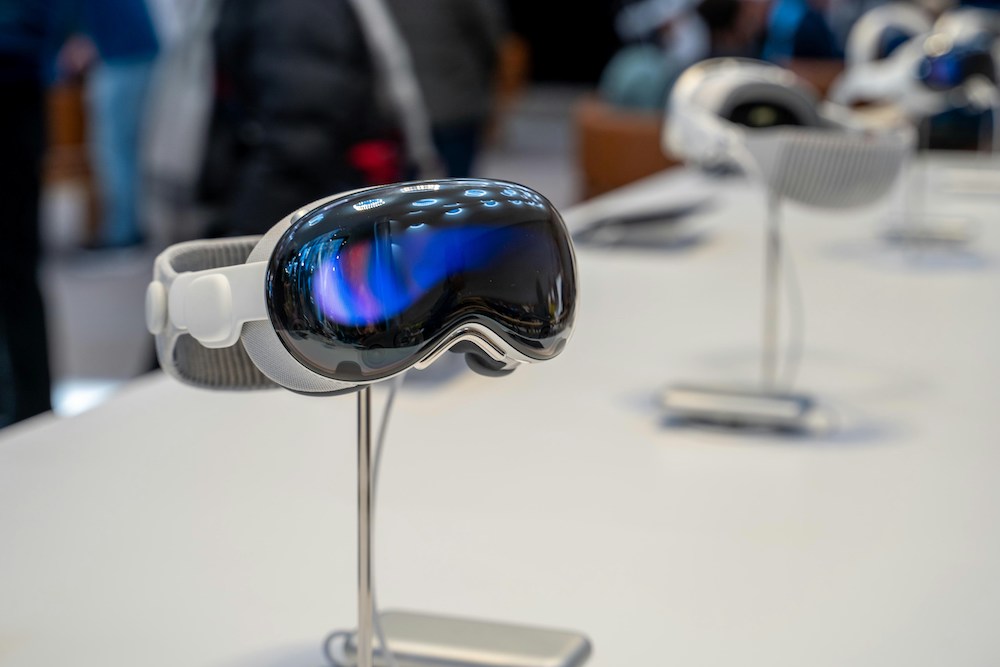
The Apple Vision Pro is seemingly everywhere right now. This revolutionary “spatial computer” promises to seamlessly blend digital content with the physical world, leaving us all wondering: Does it have a place in your clients’ strategy? As fractional CMOs, it’s our job to stay ahead of the curve, so let’s take a peek through the Vision Pro’s futuristic lens and see what we find.
What is Spatial Computing?
Imagine interacting with virtual objects like they’re right in front of you, controlled by your eyes, hands, and voice. That’s the essence of spatial computing. The Vision Pro takes it a step further, projecting high-resolution visuals onto your physical surroundings, essentially turning your entire living room into a digital playground.
Benefits for Marketers:
- Immersive Storytelling: Captivate audiences with experiences that truly resonate. Imagine showcasing a new product by letting customers virtually interact with it in their space.
- Enhanced Brand Activation: Create interactive events and installations that blur the lines between physical and digital, boosting brand engagement and recall.
- Hyper-Targeted Advertising: Imagine ads that adjust based on your real-world environment, offering relevant products and services wherever you are.
- Early Adopter Attention: Press releases about new applications are still getting some attention (but consider whether that will be saturated when your app is ready).
Challenges for Fractional CMOs:
- Early Adopter Blues: Spatial computing is still in its infancy. The Vision Pro, while impressive, will be expensive and have limited reach initially. It will be easier to convince leading-edge clients that want to capture thought-leadership attention to consider developing for the platform.
- Content Creation Headache: Developing engaging spatial experiences requires new skillsets and resources. Are your clients ready for that investment? (The device has been linked to literal headaches, too, which may also be a turnoff for widespread adoption.)
- Measuring ROI: How do you gauge the success of an ad campaign displayed on someone’s living room wall? New metrics and attribution models are needed. Your clients may not be interested in being this experimental with hard-to-measure investments.
So, Should You Dive In?
As a fractional CMO, your primary concern is your client’s success. Right now, spatial computing devices might seem to many to be a shiny, expensive toy. However, the tech has the potential to be a game-changer. Here’s how to approach it:
- Stay Informed: Keep your finger on the pulse of the technology. Understand its capabilities and limitations.
- Identify Early Adopters: Look for clients who are innovative and have the budget to experiment. Think luxury brands, tech companies, or entertainment firms.
- Start Small: Don’t jump into head-first. Consider pilot projects or collaborations with spatial computing experts.
- Focus on Value: Don’t chase the tech for its own sake. Ensure any spatial initiative has a clear marketing objective and measurable ROI.
By understanding the potential and navigating the challenges, we can guide our clients towards innovative marketing strategies that leave a lasting impression, even if it’s right on their living room wall.Remember, the key is to think strategically, experiment judiciously, and always keep your client’s goals at the center. The future of marketing might be spatial, but our focus should always remain grounded in results.
